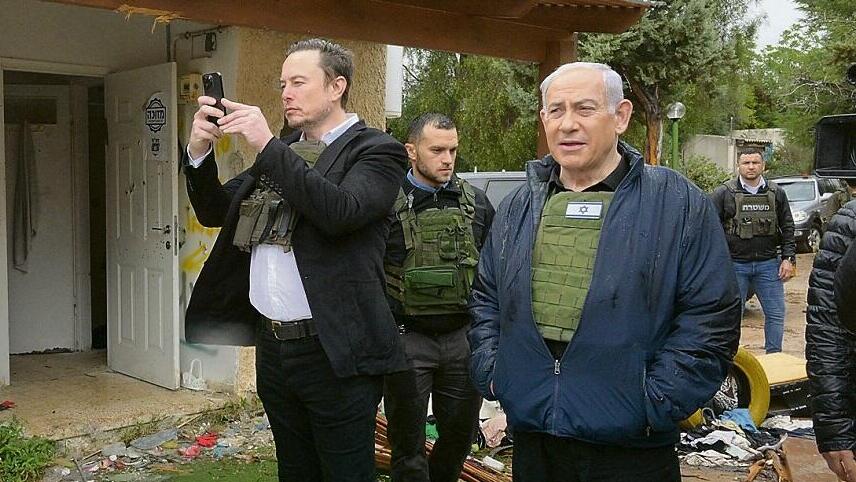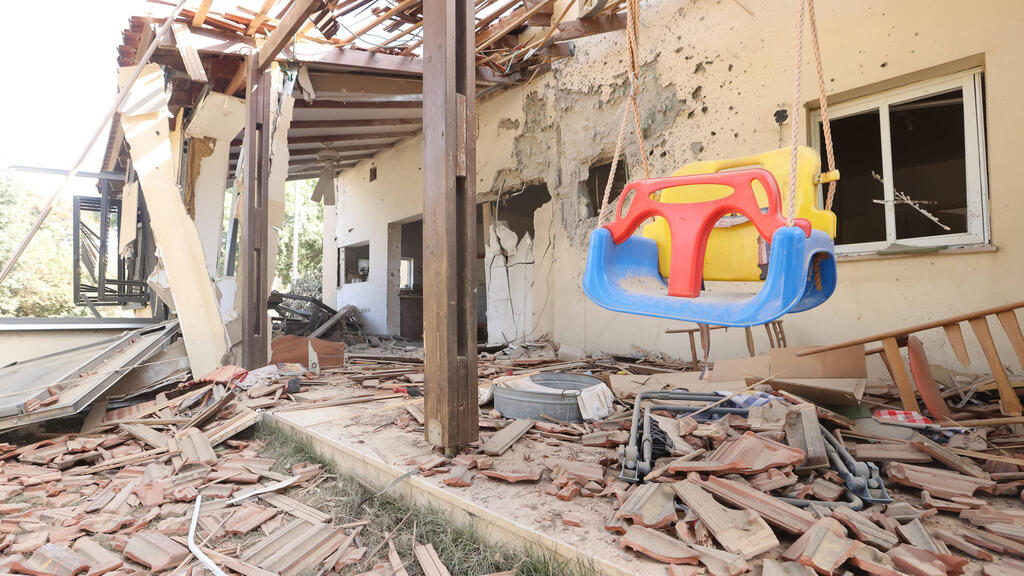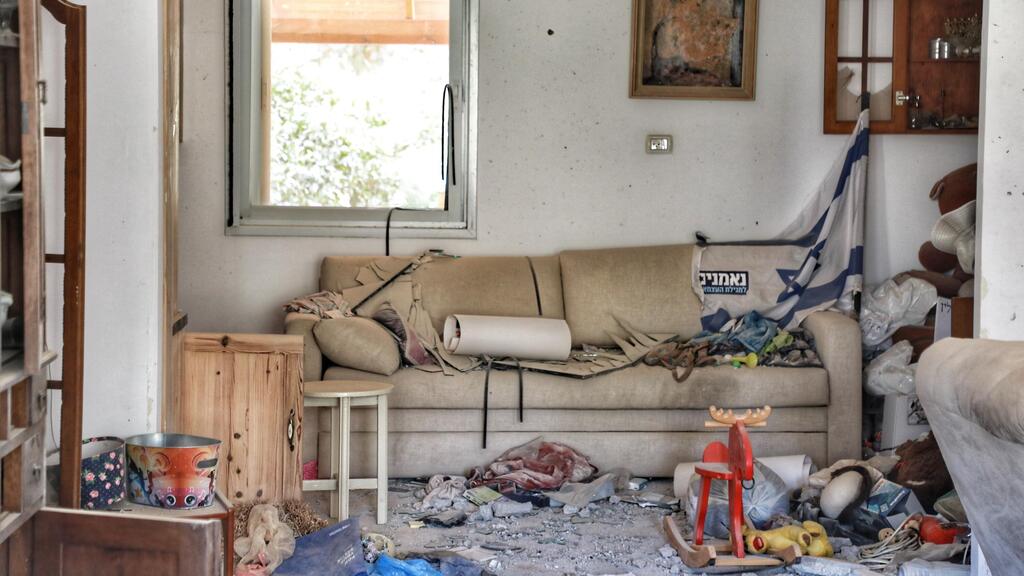At the end of November, Elon Musk visited Israel. He toured the Kibbutz Kfar Aza with Prime Minister Benjamin Netanyahu and was deeply shaken by the testimonies describing the October 7 massacre. He was also shown a video of clips most from Hamas's own cameras, collected by the IDF.
Netanyahu offered Musk the option to share a version of the video on his X account, which has over 200 million followers. Musk agreed but the film was never delivered to him.
3 View gallery


Elon Musk and Prime Minister Benjamin Netanyahu during the Kibbutz Kfar Aza tour
(Photo: GPO)
The matter "fell through the cracks," officials said, claiming judicial restrictions over the need for the approvals of the families of victims, and those were not obtained. Thus Israel missed an opportunity to share the video with a massive global audience—an effort that could have shifted the tide in Israel’s public diplomacy, which many feel has been lacking.
A senior official involved in the campaign called Musk’s agreement a "once-in-a-lifetime opportunity" to share the harrowing footage with the world. "However, legal and military officials prevented the video’s release, insisting that permission from all the victims' families was required, which was impossible to obtain," the official said.
Another official from one of the state's communication bodies stated: "The IDF Spokesperson created an incredible product, a historic feat in public diplomacy. Yet fewer than 10,000 people worldwide have seen it. There was a strategy to create a sense of ‘FOMO,’ where only a select few would view it, prompting curiosity and conversation. On the other hand, everyone involved in national advocacy and the Foreign Ministry wanted to distribute it globally."
He added that legal limitations regarding the families of victims shown in the video blocked its dissemination, saying, "It seemed like an odd excuse. We even suggested removing sensitive segments and shortening the video to 25 minutes from 47, but that wasn’t accepted either."
“Many believe this was a huge missed opportunity,” the official continued. "The video should have been screened in Times Square and broadcast on networks worldwide. Instead, it was said that legal officials were preventing its release. While nowadays they deny it, everyone knows lawyers behind the scenes blocked it. This is an incredibly powerful tool, and anyone who saw it was deeply disturbed."
The source also revealed that there were further attempts to release a shortened version of the video to international media, but outlets refused to broadcast it after learning it wasn’t the original IDF video, as they didn’t want to rely on leaked material—they insisted on the official version.
“Instead of a global screening week, it was handled like a Rolex launch”
"We were tearing our hair out in frustration. Everything moved at a snail’s pace. No one had the courage to take responsibility, and the issue kept being passed to lawyers, who vetoed it," said another official involved in the behind-the-scenes efforts to distribute the video. "The prime minister wanted the video distributed, but neither he nor his team followed through. Rather than securing 1,000 theaters worldwide for free screenings, they opted for small, exclusive events, as if it were a luxury item for collectors."
An Israeli citizen living in the U.S., who was active in Israel's advocacy efforts, expressed his frustration with the government's strategy. "Israel’s biggest mistake was focusing on the stories of hostages instead of the atrocities of October 7. At any given time, there are 300 Americans held hostage worldwide, and as sad as it is to say, it doesn’t capture public interest.”
He added that closed screenings of the video achieved nothing. "There were internal power struggles between the Foreign Ministry and the IDF Spokesperson's Unit over who would be involved in the screenings. It was obvious that a 47-minute film couldn’t be broadcast internationally. They needed short, 30-second clips and to run them globally."
The same Israeli claimed that Israel’s Attorney General, Gali Baharav-Miara, blocked the video’s release. "She and her team deny it, but they were responsible for halting the distribution. The main reason was their fear of dealing with the issue. Sadly, everyone involved wasn’t truly looking out for Israel’s interests—they just didn’t want to get in trouble."
Thanks to private donations, underground websites have since released videos containing much of the footage from the IDF video, with one clip reaching 20 million views. Officials working on the issue believe it’s not too late to release the full video. "It’s still possible," they said. "Faces can be blurred for families that object. The country’s interest now is to distribute the video, even a year later."
Get the Ynetnews app on your smartphone:




